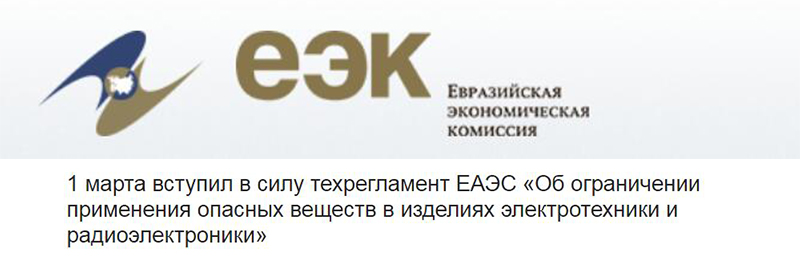The Eurasian Economic Union stipulates that the use of hazardous substances in electronic and electrical equipment will be consistent with the relevant provisions of the EU RoHS regulation. This regulation applies to the Eurasian Economic Union member states of Armenia, Belarus, Kazakhstan, Kyrgyzstan and Russia to restrict the use of hazardous metals such as lead and mercury in ordinary household appliances. The regulation comes into force on 1 March, 2018.

Restrictions on the use of hazardous substances in RoHS and their maximum concentration values tolerated in homogeneous materials (by weight) are as follows:
Lead (0.1%)
Mercury (0.1%)
Cadmium (0.01%)
Hexavalent chromium (0.1%)
Polybrominated biphenyls (PBBs) (0.1%)Polybrominated diphenyl ethers (PBDEs) (0.1%)
This regulation is applicable to domestic appliances, IT equipment, telecommunications equipment, lighting equipment, electrical tools, leisure and sports equipment and vending machines, but not to electric toys, solar panel and photovoltaic installations, products designed for use in land-based and orbiting space objects, medical devices and electric batteries.
The Regulation also outlines conditions for compliance, labelling and operation in the Customs Union market and will go through a two-year transition period. EEU member states are required to meet the regulatory restrictions by 1 March, 2020. During the period of the transition, the member states of the alliance can produce and sell products according to their own technical regulations.
|Further Information:
the Restrictions on the use of hazardous substances in EEE
|Our Service:
